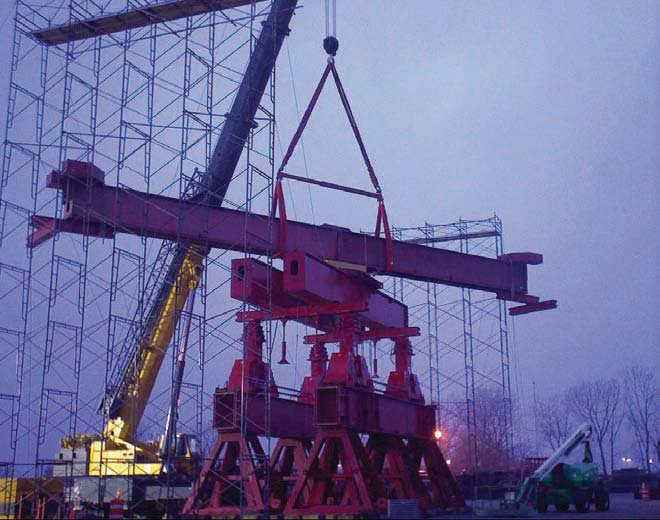As with most crane installation projects, few projects are exactly alike. Many times it is necessary for the crane company to fully communicate with the customer to clearly understand the customer’s specific needs for the crane, usage scenarios, expected goals, etc. Work with the customer to develop a detailed project plan, including arrangements for installation time, location, personnel, materials, etc. Ensure that both parties have a clear understanding of the project progress so that plans can be adjusted in a timely manner to deal with possible problems. So, if Dongqi Crane is allowed to provide the installation of bridge cranes for nuclear power plants, what measures may be taken? Today I will answer some questions for curious customers through a bridge crane installation case.
Michigan’s power stations generate 2.2 gigawatts of electricity, enough to meet the needs of the city of more than 1 million residents. It was planned to install and commission a 250 ton turbine overhead crane so that the adjacent turbine generator could be operated at full power without the need for shutdown. In preparation for the project, the crane company built a hydraulic heavy-duty lifting and rotating test structure off-site prior to installation.
The crane company used multiple telescopic gantry systems and hydraulic turntables to safely lift and rotate components of the 250-ton overhead crane via a 60-ton auxiliary hoist.

Two 26.6m girders were lifted 60.28m above the turbine floor and placed between the two operating units. Workers configured the gantry system as a temporary lifting assembly for the project, which had never been used in this way during power operations. This design proves to be less intrusive on plant structures.
According to the manufacturer, the use of a second overhead crane could reduce outage duration by up to seven days during an upcoming turbine retrofit outage alone. Additionally, additional cost savings are expected to continue with all future outages due to the elimination of vulnerability points with the addition of a second overhead crane. The entire hydraulic heavy-duty lifting and rotating structure, fabricated on site in preparation for the installation, fully replicated actual lifting conditions. It is used for remote load testing of innovative telescopic gantry systems and turntable technology, reaching 125% of maximum load over the entire range of motion while also maintaining leveling tolerances of 0.5%.
“The lifting team went beyond the provisions of ASME NQA 1-2008 Quality Assurance Requirements Subpart 2.15, which states that dynamic load testing is equal to 110% of the rated load, and instead chose to conduct a more conservative 125% rated load test,” they explained. The trials also exceeded the new ASME P30.1.2014 “Load Handling Activity Planning” specification issued during the project planning phase, although not within the initial scope. “
The test load exceeds the operating limits to ensure sufficient margin to cover any of several failure modes that may be encountered during the installation.
In addition, controls were set up to ensure that the gantry system was assembled identically to those used during the demonstration. It features redundant level controls, LED levels and 3D laser scanning total station guidance, time-lapse and live video of the entire sequence.
We know from the models that the system is rock solid even in wind speeds of 15-20 mph (about 32 km/h). Fine control of the power tower makes it easy to maintain lift levels while the rotational motion is exceptionally smooth.
The installation method requires a joint effort between the crane supplier, utility company and installation contractor to manage risk through reliable demonstration of lifting operations through an independent review of analytical calculations of the temporary works lifting system.
The results enabled the owner to avoid opening the turbine building envelope during installation and complete the work without affecting the duration of the outage.
At the end of the case, the phrase “the installation method requires a joint effort between the crane supplier, utility company and installation contractor” could be applied to either customer. As a service provider, Dongqi Crane hopes to provide perfect services to all customers, and most hopes that the project can be fully implemented and effectively utilized. This is related to the customer’s experience, the reputation of the Dongqi Crane brand and the future. We have summarized the following opinions on how to maintain effective communication and cooperation with customers:
Contact our crane specialists
Send us a message and we will get back to you as soon as possible.